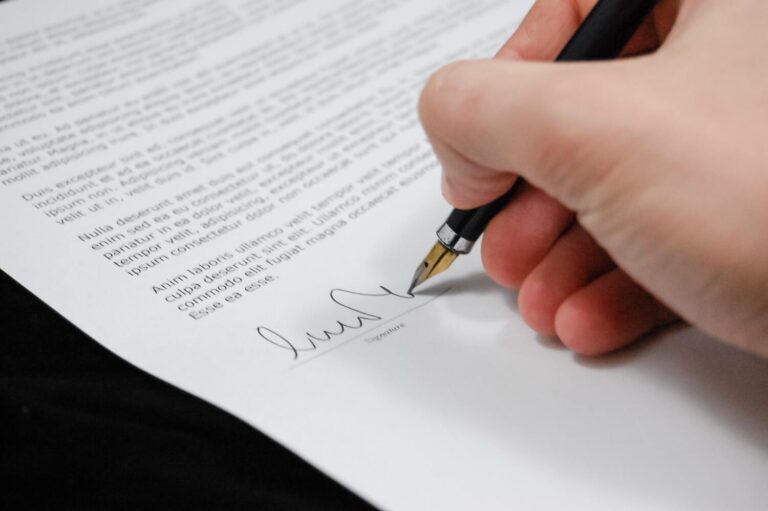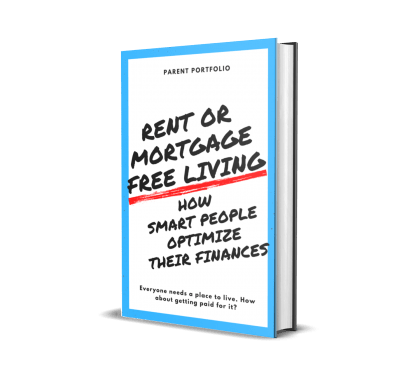The Easy How To Give a 30 Day Notice To a Landlord

It’s essential to give your landlord 30 day notice before moving. There may come a time when you decide that living in your rental unit is no longer where you want to be.
Regardless of whether you’re moving into a different rental property or have purchased a home lined up, you must notify your landlord or the property management company of your plans to move.
Always put the notice in writing for your records, and you can choose whether you want to email it, send it through the United States Postal Service, or drop it off in person. If you don’t send it in person, be sure to get a return receipt to verify it was delivered.
What is a 30 day notice to vacate?
A 30-day notification is documentation that you provide to your landlord, stating that you’re going to be moving out within the next 30 days. This 30 day time period should coincide with the last time you’re to pay rent, so you will be all caught up when you leave.
You may want to review your current rental agreement and familiarize yourself with the effective date of your lease because local landlord-tenant laws vary from city to city.
For instance, although some landlords require a 30-day notice, some landlords require 45 to 60 days’ notice when you’re moving out.
If you were to give less notice when moving, you could be violating your agreement. Therefore, it’s essential to review your lease agreement because you may have signed off on it without realizing it.
Why is it important to give a 30-day notice to vacate?
Not only is giving a 30-day notice designed to be courteous, but this notice also provides a landlord with the opportunity to find a new tenant.
Even if you’re still living there, they can potentially show the apartment to prospective renters (they have to give you notice beforehand) and have someone sign a lease, so they’re ready to move in when you move out.
When should a 30 day notice to move out be given?
When you let your landlord know your intention regarding moving out, you must provide them with a move-out date, which should be at least 30 days.
If you can let them know further ahead, then that’s wonderful as well. The landlord essentially needs to know when they can get back into your home or apartment.
Your landlord may have you sit down to sign a lease termination letter. This agreement will outline how much money you owe, any additional fees necessary because of damage you caused to the property, whether or not you get a deposit back, etc.
Can a landlord use a 30-day notice to move out to change a term lease?
A landlord does not have the legal ability to change a term lease based on the receipt of a 30-day notice. Therefore, only both the tenant and the landlord can change the lease agreement.
A landlord can change the lease at the end of the term but must meet a 30-day notice requirement to describe the changes occurring as soon as the current lease ends.
Is a 30 day notice an eviction from a landlord?
There is a couple of different 30 day notices that you can refer to. One is the communication provided from a tenant to their landlord stating that they will be moving out in the next 30 days, which generally falls in line with the lease agreement that is in place.
On the other hand, there is another case of the landlord informing the tenant that they must vacate per their discretion (i.e., a lease violation). However, a landlord must provide a 30-day notification to the tenant on behalf of the landlord and specify the tenant must leave the premises within a set period.
A vacate letter must state when the move-out day is and the reason for evicting. For example, a landlord cannot hand out a 30-day eviction notice without an explanation. A landlord must give proper notice with an eviction notice.
Is a full month’s rent required on the month a tenant moves out?
Whether or not you owe any additional rent when you move out will be detailed in your lease agreement. For example, some landlords may require you to pay an extra month before the next rental due date upon moving out, or you might have to pay a prorated rent based on the actual day that you’re leaving.
However, suppose you’ve provided your landlord with a valid 30-day notification, and you leave on the day you provided. In that case, you very well may be able to leave without paying anything additional.
How to write a 30-day notice to the landlord
Your 30 day notice to your landlord should be a formal letter stating that you intend to vacate your residence in the next 30 days.
You need to include your name, current contact information, the address you are moving out of, your official moving date, and your signature.
Make sure that you save a copy of your notice for your records. A copy should be sent to your landlord, ensuring that you’ve postmarked it to confirm that you’re providing a full 30 days.
Then, you can follow up to ensure that your landlord has received the notice, or you can let them know that it’s on the way to provide them plenty of time to find someone new to rent out to.
Instructions on How to Submit a Notice to Landlords
When submitting a 30-day notice to landlords, you’ll want to follow these steps as a template.
- Start by including the tenant’s name, address, phone number, forwarding address on the notice. Ensure you’re providing accurate contact information of the new address (i.e., zip code, city, state), especially if your landlord will return a security deposit to you.
- Include today’s date so you have a record of when the landlord provided notice.
- Write out your intention of moving, and include the date you are looking to terminate your lease.
- Sign the bottom of your written notice.
- Give your landlords a head’s up that your 30 day notice is on the way.
- Send your letter by way of certified mail. Certified mail will provide you with a receipt, and you’ll be notified when they deliver your letter to your landlord.
This extra step is your proof that you did indeed provide a full 30 days notice. Keep in mind that your landlord needs to receive the letter in their hand 30 days before the date you’re moving. So try to give the mail service about three days to deliver the letter. - Retain a copy of your letter for your records.
- Follow up with your landlord to ensure that they’ve received the letter.
Final Thoughts
Even if you’re not ready to renew your rental agreement for another periodic lease, provide a written notice to your landlord or property manager about a month-to-month lease agreement, which will make you a holdover tenant.
However, still, give your landlord a 30-day notice about your plans. When you provide proper notice to your landlord, they will greatly appreciate it.
For landlords, this notification helps them look for a potential new renter. The landlord wants to avoid a vacant real estate property as much as possible. Then, when it’s time to move, they can terminate a month-to-month lease.
Lastly, although rent is due, don’t forget to pay your utilities. And, if you leave a property without cleaning up your items, the landlord reserves the right to withhold your security deposit. However, the security deposit will pay the landlord for any repairs or cleaning services.






